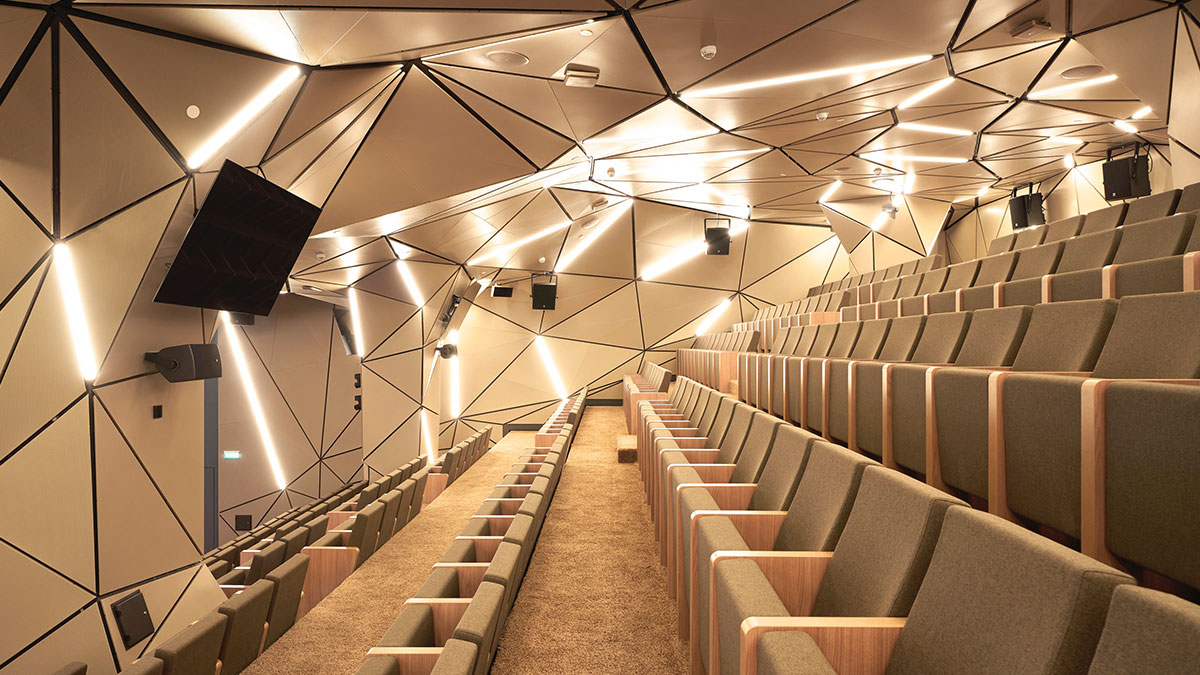The Hidden World of Auditoriums: A Journey Through Time and Space
Are you a fan of music concerts, movie screenings, or theatrical performances? If so, you must have visited an auditorium at least once in your life. But have you ever wondered about the history and design of these iconic buildings? Let's take a journey through time and space to explore the hidden world of auditoriums.
Auditoriums have been around for centuries, dating back to the ancient Greek and Roman civilizations. They were used as gathering places for political debates, religious ceremonies, and cultural events. The Greek amphitheaters were the first to feature tiered seating, allowing for an unobstructed view of the performance. The Roman colosseums, on the other hand, were used for gladiator fights and other spectacles.
Fast forward to the modern era, and auditoriums have become a staple of the entertainment industry. They are designed to accommodate a large audience while providing an immersive experience. From the sound system to the lighting, every element is carefully crafted to enhance the performance.
One of the key features of an auditorium is the acoustics. It refers to the way sound waves behave in the space, and how they reach the ears of the audience. The acoustics can make or break a performance, as it determines the clarity and balance of the sound. The design of the auditorium plays a crucial role in achieving optimal acoustics.
Some of the factors that affect the acoustics of an auditorium include the size and shape of the room, the materials used for the walls and ceiling, and the placement of the sound-absorbing panels. For example, a rectangular room with parallel walls tends to create echoes and reverberation, while a curved room with irregular surfaces can scatter the sound waves, creating a more natural sound.
Another important aspect of an auditorium is the seating arrangement. The goal is to provide a clear view of the stage for every member of the audience, without any obstruction. The design of the seating also affects the acoustics, as it can reflect or absorb the sound waves. The distance between the stage and the audience is also a factor, as it affects the perception of the sound and the intimacy of the performance.
The lighting design is another crucial element of an auditorium. It sets the mood and tone of the performance, and can enhance the visual impact of the show. The lighting designer has to take into account the color, intensity, and direction of the light, as well as the movement and timing of the cues.
Nowadays, auditoriums come in all shapes and sizes, from small community halls to large concert arenas. Some of the most iconic auditoriums in the world include the Sydney Opera House in Australia, the Royal Albert Hall in London, and the Carnegie Hall in New York. These venues have not only hosted some of the greatest performances in history but have also become landmarks of their respective cities.
But not all auditoriums are created equal. Some are more suited for certain types of performances than others. For example, an opera house requires a different type of acoustics than a rock concert venue. The stage design and equipment also vary depending on the performance, from the simple setup of a lecture to the elaborate props and costumes of a musical.
In recent years, technology has played a significant role in the evolution of auditoriums. From digital sound systems to virtual reality experiences, there are endless possibilities for enhancing the performance. However, the human element remains just as crucial. The performers, the audience, and the atmosphere created by the space all contribute to the magic of the experience.
Labels: Interesting


0 Comments:
Post a Comment
Subscribe to Post Comments [Atom]
<< Home